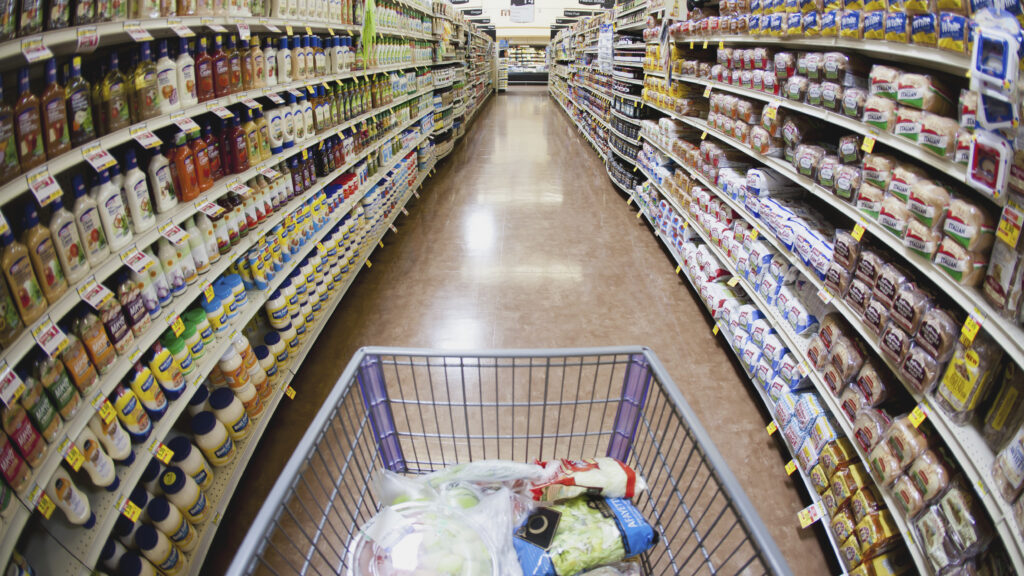Shortly after the first COVID-19 case hit West Virginia four years ago, our way of day-to-day living drastically changed. Many of those alterations dealt with how we went shopping.
West Virginia Retailers Association President Bridget Lambert spoke with Randy Yohe on COVID-19’s effect on retail – and how our shopping lives have forever been changed.
This interview has been lightly edited for length and clarity.
Yohe: What was the biggest impact that COVID-19 first made on retailers?
Lambert: I think it was just shifting and making sure that we focused on the customer experience and how to keep our customers safe when they were coming out into the stores. When they were doing necessary shopping, it was essential that we had a safe environment for them to come into and shop as best that we could. You saw plexiglass go up at the point of sale. We had different mechanisms that were going on, on the back end of the store, in how we deal with deliveries coming into the store. Boxes were sterilized with a spray. We wanted the employees to be in a safe work environment. And so, back-of-the-store store safety concerns were addressed as well.
Yohe: What about stocking issues?
Lambert: We had a lot of our employees working evenings and nights to stock the shelves so that they weren’t in the middle of the customers coming in when they were shopping. There were some shifts in how retailers stocked stores. It also kept the employees from being exposed to more customers during the day. We did a lot of different things regarding inventory on the store shelves. As you know, we suffered some during the pandemic with being able to fully stock our shelves at all times because of supply chain issues we were dealing with.
Yohe: And what did those COVID-19 related supply chain issues really involve?
Lambert: It really involved several things. It all actually started in the ports in California with some ships not being offloaded in a timely manner. We had trucking issues across the United States. COVID-19 impacted how goods were made and how they were shipped and the availability our stores had of receiving those shipments. It was not as standard as it was prior to COVID-19 hitting the country. We may have 10 trucks expected to come into a large retailer on any given day and four of them would arrive because that’s all of the goods that we’re available. So retailers were definitely struggling to make sure they were able to keep the shelves stocked.
Yohe: Have supply chain issues been resolved?
Lambert: By and large, yes. We are seeing that the store shelves are stocked more. We have a backlog of merchandise that was on backorder from that timeframe that has come in. Sometimes, we’ll be flooded with outdoor furniture shipments that had been on backorder, those types of things that we’re dealing with now on the front end that goes to the actual customer, and we are still working to this day. Retailers are operating a little bit of a thinner margin of stock. They are very resilient and respond to the trends that are going on in the supply chain. But they are having, I would say, razor thin margins of stock right now.
Yohe: Talk about how COVID-19 spurred the development of phone and email ordering, curbside pickup and home delivery.
Lambert: The retail industry had been offering a diversified approach to shopping for customers, such as online. We had continued growth of customer online shopping year after year. The holiday season showed those numbers every year. And many retailers were still looking for a way to offer goods to their customers and through the omni channel approach, and they were in the process of expanding that approach. But the COVID-19 pandemic really blended traditional brick and mortar store shopping with the convenience of online shopping.
It also really forced the retail industry to pivot and focus more on resources such as the buy online-pick up in store and the buy online-shipped to the store. Our brick and mortar retailers stepped up and started to offer curbside pickup. They developed contactless shopping so you can go online and order. It’s put into a locker and you are given a code to access your order. You can walk right out without having to go into the backend of the store, or interact with any employees in the store. So these emerging trends continue now to be normal for retail customers.
Yohe: How have West Virginia retailers balanced COVID-19 enhanced inflation when you have customers versus overhead?
Lambert: That is one thing that the retail industry continues to struggle with. As you might imagine, it’s very expensive to pivot a whole industry or when you are dealing with something like shifting from mainly brick and mortar customers to a lot of online shopping. The industries that really have benefited from this shift, you’re seeing warehousing, the delivery companies, they really have picked up their end of that situation and expanded.
So maybe in-store retail employment has gone down slightly. We see the shift in the jobs go to a different type of industry, where they are picking up the packages, they’re delivering them to the front door. So the retail industry in the landscape looks a little different now.




















